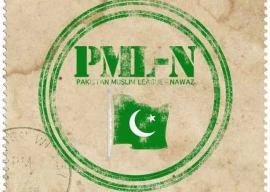
Urdu-Hindi (the ancestor of both modern Urdu and Hindi) was not originally associated either with formal religious institutions or bureaucracy of the state in Mughal India. The language of the Islamic texts and liturgical practices was, of course, Arabic. However, religious texts were explained in Persian. Persian was also used for formal discourse on Islamic issues by the ulema. Yet, probably to communicate to the common people, some of the sufis used the local languages. Thus there are references to conversation, poetry recited during musical (sama’a) sessions and wise sayings in Urdu-Hindi from the 15th century onwards.
Remarkably enough, a religious reformer called Bayazid Ansari (1526-1572) wrote lines in what he called ‘Hindi’ in the Perso-Arabic script in his book entitled Khairul Bayan (1560-1570). The book was written in South Waziristan, in a Pashto-speaking area, but he thought this language useful for the propagation of his religious ideas. Anyway, despite this and other early writings, this ancestor of Urdu was not associated with Muslims. This association grew during the British period and, apart from the reasons given in Part-I of this article, it grew mainly because of the use of Urdu in printing, education and religious debate.
As Muslim political power shrank and anxiety spread about why this had happened, the ulema began a movement of education and purification. This they did by writing small books (chapbooks) in the local languages. Thus there are nur namas, wafat namas, jang namas, lahad namas etc. in almost all languages used by Muslims in South Asia and, as it happens, most of them are in Urdu. This movement started in the 18th century and accelerated in the 19th and the 20th centuries. Indeed, if one consults the British reports on printing, one finds that two themes always predominate: religion and love. In some years, one may exceed the other but, as books on history and morals also have a religious colour, it may be true to say that religion mostly predominates printing.
This was a tremendous social change for all religious communities in India. Thus, although there was a secularising trend introduced by the British also, there were more religious texts available in print than ever before. Hence, the consciousness of religious identity grew among all religious communities in India. And within Islam, the consciousness of sectarian identity grew also. Thus, on the one hand the modernist secular classes grew alienated from the religious masses. But on the other, the religious classes also grew alienated from each other and from other religious communities.
As for education, the madrassas started explaining the Arabic texts of the Dars-i-Nizami in Urdu though the classical exegeses were still in Persian. Meanwhile, Shah Abdul Qadir (1753-1827) and Shah Rafiuddin (1749-1817) translated the Holy Quran into Urdu. Exegeses of the Holy Quran, such as Murad Ullah Sanbhli’s Tafsir-e-Muradi (1771) came to be printed.
Indeed, by the 20th century, Urdu came to possess an impressive amount of Islamic literature. From the popular elegies for the martyrs of Karbala (marsiya) to devotional poetry; from stories read out among illiterate women (for example, Bibi Fatima ki Kahani) to scholarly works on Islamic philosophy; from the hagiographies of saints to the strictly monotheistic sermons of the Wahabis — all this varied literature was predominantly in Urdu.
Moreover, the sub-sects of Islam — not just the Sunnis and the Shias but the Ahle Hadith, Deobandis, Barelvis and others — wrote their polemical literature in Urdu. They indulged in debate (munazara) in Urdu and refuted each others’ claims in the same language. Even those who are considered heretics — as Bayazid Ansari was in the 16th century — published their works, attacked their opponents and defended themselves in Urdu.
Whether one is looking at the fundamentalists, revivalists, modernists or heretics — one notices that their favourite medium of expression is Urdu. This incessant debate went on in face-to-face munazaras and through constant pamphleteering throughout the 20th century and still continues. Even the works of the al Qaeda philosophy and the literature of the militants which is on sale outside mosques and madrassas in Pakistan today is in Urdu though hardly any of them are mother-tongue speakers of the language. Moreover, Urdu is still the preferred language of instruction and examination in Pakistan and India. Even some madrassas in Bangladesh give it some space though, of course, others use Bengali.
All these factors associate Urdu with Islam and the Islamic identity in the public mind in South Asia. While it is true that Urdu has also been associated with socialism (Taraqqi Pasand Adab), modernity and enlightenment (the Delhi Renaissance), the association with Islam predominates. The official discourse in Pakistan celebrates this in order to emphasise difference from India. The Indian Muslims, on the other hand, emphasise the composite character of Urdu and call it a joint product of the Hindu and Muslim civilisations. Yet, in India, too, Urdu is part of Muslim politics and efforts to preserve it necessarily dwell on the Perso-Arabic script and the Persian and Arabic diction of modern Urdu. Yet, a language may have more than one association. And it is always possible that Urdu can produce discourses of inclusiveness, tolerance and pluralism which can make it both a rich repository of Islamic literature and a language of enlightened, progressive and tolerant thought. (For details see my book From Hindi to Urdu: A Social and Political History Oxford University Press, 2011 and Orient Blackswan edition in India).
Published in The Express Tribune, August 28th, 2011.
COMMENTS (15)
Comments are moderated and generally will be posted if they are on-topic and not abusive.
For more information, please see our Comments FAQ


1731637727-0/Bear--(1)1731637727-0-165x106.webp)

1731619853-0/ice-cream-(1)1731619853-0-165x106.webp)

1708870589-2/PATS-(3)1708870589-2-270x192.webp)

1731647129-0/Untitled-design-(56)1731647129-0-270x192.webp)








Someone said that Hindi has been in existence for thousands of years. That is a joke. I agree that sanskrit is an ancient language and has existed for centuries (surviving to the present day though not as a spoken language) but Hindi is not very old. Many south indian languages like Tamil, Telugu are a lot older. What we call as "standard hindi" today is derived from "Khari boli" of the mughal period. In fact, even the grammar was standardized after independence only. Hindi grammar borrowed liberally from Panini's grammar ("Ashtadhyayi"). Hindi neither has the sheer beauty of urdu nor the grandeur of sanskrit.
Look it our hypocracy all leaders of pre and after partition were english spoken peoples for example syed ahmed khan of aligarh mr jinnah, mr gandhi south african national liaqat ali khan nawab of hyderabad state, agha khan and then making hindi and urdu a national language what a joke with innocent mind set peoples of india pakistan
Mr Jinnah & Mr Gandhi both educated english in other word were out siders gujrathis became indo pak leaders both dont know urdu hindi what a story of india.
One thing i dont understand over this article and many like this if hindi or urdu and same thing with arabic and persian if these languages are national then why all these countries where peoples speaks these lang have English official lang what a double standerd is not it Urdu/Hindi is good for Bollywood songs only Mohammad Rafi sahab mukesh sahab kishore sahab and lata ji that it nothing else.
One shouldn't forget that just 6% of the population in Pakistan considers Urdu as their mother tongue. Given this Urdu is certainly not the language of the masses.
We don't understans what he wants to plead, I think all liberal fascists are trying to catch any fish to remain attach to uncle sam by bashing Islam by hook by crook. He has many flaws and self created notions to misguide public. Remember "Tarraqi Pasand Tehreek" were socialists, not todays liberal fascists or athiests. Urdu is a language of not only Muslims but others also speak. It is confusing article having nothing pluralistic.
Go for a common roman script for both Urdu and Hindi and the differences will vanish in a very short time.
I always enjoy reading your articles, Good Sir.
Every effort should be made to preserve this beautiful language.
So if we this argument is taken to its logical conclusion then Mirz Ghalib must have been an Islamist. After all there is no dearth of Persian in his poetical works. And then of course there are other poets of those times who must all also have been hidden Islamists bent upon converting Urdu into an Islamic language by adding Persian and Arabic into their works.
Also no one who is a serious scholar of Urdu has ever considered Urdu to be a militarist language just because the word Urdu means army/lashkar in Turkic languages. Evolution of Urdu/Hindi is a complex phenomenon spread out over nearly a thousand years and efforts to reduce it into simplistic conspiracy theories of this or that group should not have a place in serious scholarship.
Neo-Pak efforts such as this article are quite common these days. The idea is simply to try to re-write history and to put the responsibility of every thing that has gone wrong in Pakistan on the shoulders of those who may be in disagreement with the ideological view points of the Neo-Paks. This is no different from what the Neo-Cons in the west have done to silence their ideological opponents.
Sir with all due respect there is a fundamental flaw in your premises that inclusion of Persian and Arabic words in Urdu means Islamization. There is a clear distinction between Arabic, Persian and Urdu languages and religion of people who speak those languages. Once you accept this flaw you are perpetuating a false history.
On the flip side the sanitation of Hindi or Sanskrit words from Urdu may have hindered its world wide acceptance. Look at the English language it adopts hundreds of new words every year and hence is the most popular language of the world. If you compare to English, Urdu is no where in the world map and this proves my point.
Pakistani Muslim love adopting everything of petro rich Arabs and Iranians. They think adopting Arab culture and discarding Indian culture will make them better Muslim. Comparatively Muslim from India who is exposed to various cultures is an equally good or better (culturally rich without under pressure to sell out their identity) person. Indian Muslims have retained Hindi and Sanskrit words in their daily usage of Urdu language due to exposure to various other languages and the daily dose of Bollywood TV and movies.
@ Ashok I think common man of indo pak from peshawer to kerala if understand the communiction between them is lang of urdu which in india called hindi and its hard to replaced and i just know this by wtiter india ruled by northern pathans and language we speak is also invented by pathans too. Bayazid ansari.
I agree that Urdu is a beautiful language - but I don't think it has practical usage in modern day India on a day to day basis.
Even if we left out Sanskrit, the regional languages of India are older than most languages in the world and there is no need to displace these languages in favor of Urdu. Urdu may eventually be limited to certain groups of Indian Muslims within India - such as those from UP, Bihar and Hyderabad. Beyond this it will be represented in certain film songs, ghazals, poetry contests and be used for liturgical purposes. Urdu will survive in India in its own way.